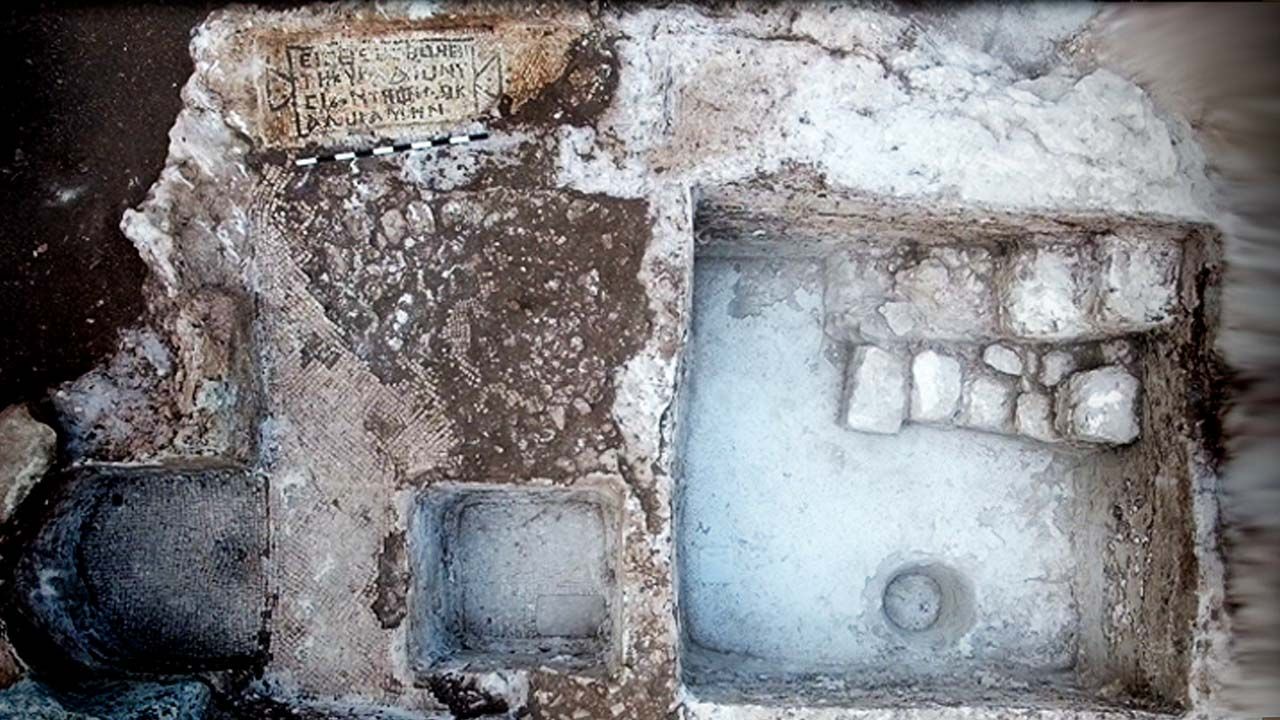A new Tzur Natan neighborhood construction in central Israel was proceeded by a dig. The excavation unearthed a rare written record. It points to a Samaritan business from 1600 hundred years ago. The Greek inscription mentions a wealthy landowner ‘Master Adios’. The heartland of Israel in the 5th century was populated by the Samaritans. Just outside of the excavated house structure is an ancient wine press. Inside the house scientists fond a well-preserved Greek inscription from the 5th century that appears to be a blessing.
According to Prof. Leah Di Segni of the Hebrew University of Jerusalem, the short inscription reads, “Only God help the beautiful property of Master Adios, amen.” Archaeological and historical evidence points to Adios as being a wealthy Samaritan landowner. Previous excavations have already uncovered an ancient Samaritan synagogue that was converted into a church in the 6th century, just nearby.
“The inscription was discovered in an impressive winepress that was apparently part of the agricultural estate of a wealthy individual called Adios. This is only the second such winepress discovered in Israel with a blessing inscription associated with the Samaritans. The first was discovered a few years ago in Apollonia near Herzliya,” said Torge. Master Adios would have been an elite member of the society, said Torge. “The location of the winepress is near the top of Tel Tzur Natan, where remains of a Samaritan synagogue were found with another inscription, and reveals Adios’ high status,” said Torge.

According to the detailed excavation report on Tzur Natan, there is ample evidence of agricultural activity in this region. The soil is especially good for vines and olives and during the Roman and Byzantine eras (2nd-5th centuries CE). And this land was heavily cultivated. Archaeologists note 120 wine presses, 50 olive presses, 50 cisterns and multitudes of agricultural terraces in the region.

“These groups were repeatedly found every 100-200 meters… It was thus concluded that in this period the settlement was inhabited by farmers who own their own land and cut their own installations into their individual plots.” And the people who settled this land were the Samaritans according to archaeologists.
Many Jews were casualties of wars with Rome (1st and 2nd centuries CE). Thus the Samaritan community prospered throughout the 3rd and 4th centuries. They thrived until the rise of Byzantine Christianity in Israel. This shift of power spelled the beginning of the end for this vibrant religious community. After Christian persecutions and desecrations of Samaritan holy sites, the community embarked upon a series of rebellions and fought the Byzantines for years. But Christians won. This newly discovered estate, the wine press and the inscription in praise of a wealthy landowner add a further layer of understanding to the Samaritan culture and history of the rebellion 1600 years ago.
Original Sources: Times of Israel, Archaeology Institute of America.











Member discussion